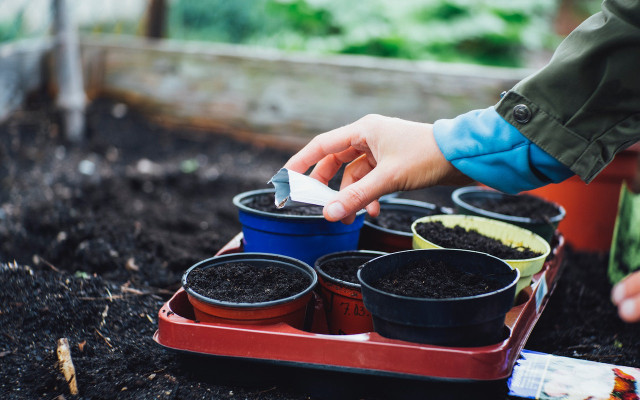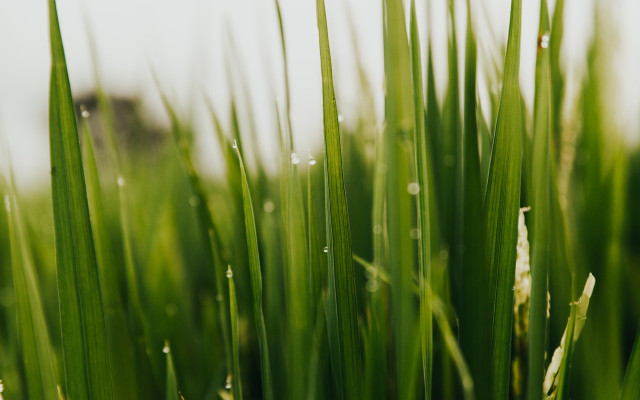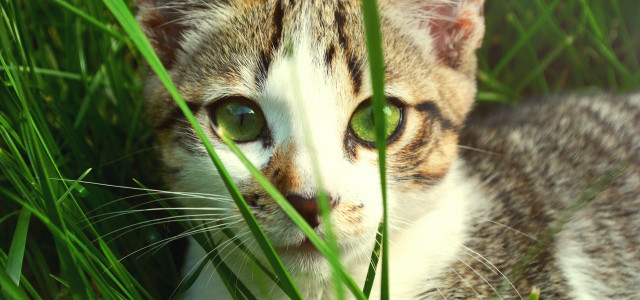Promoting your cat’s digestion doesn’t have to be an expensive undertaking – growing cat grass at home is easy. We’ll show you what to pay attention to when growing cat grass.
Nibbling on cat grass plants helps cats get rid of tufts of hair swallowed during grooming. When they shed their winter coat in the spring, the resulting hairballs can cause serious digestive problems for your four-legged friend. If you’re growing cat grass at home, your cat can chew on the plant at its own leisure.
Varieties of Cat Grass Plants
Cat grass is not a specific plant variety, it’s a collective term for various grasses that are suitable as a digestive aid for cats.
If you’re looking to grow your own cat grass, you’ll often find mixed seed packets that include a blend of the following cat grass plant seeds:
- wheatgrass
- oat grass
- barley grass
- ryegrass
- flax
Of course, you can also buy single variety seeds depending on your cats’ likes and needs. If your cat likes to frequently nibble on the grass, go for inexpensive and fast-growing sweet grasses like barley, wheat, or oat grass.
Growing Cat Grass from Seed

Once you have decided which variety of cat grass plant you want to grow, you can easily buy the seeds online (eg. on Amazon**) or in stores like Home Depot or Walmart. Just be sure to look for organic seeds when purchasing. Aside from that, you’ll need a few small indoor pots and some container soil. Before you start sowing, you should follow a few tips:
Location: Since most plants don’t have very specific location requirements, growing cat grass is easy to do no matter where you live. For best results, place on a bright windowsill of an east- or west-facing window at temperatures between 60 and 65 degrees. However, make sure your pots aren’t placed in full sun, as the cat grass plant will quickly burn there.
Soil: Regular garden soil or a potting soil mix works best for growing cat grass.
Fertilizer: Since you’re growing cat grass for your cat to eat, skip the fertilizer completely. You don’t want to unintentionally harm your four-legged friend.
Instructions for Sowing Cat Grass Seeds:
- Soak the seeds in water for one to two hours before sowing. This will help shorten the germination time.
- Fill a flowerpot with garden soil or low-nutrient potting soil.
- Press the seeds two to three inches deep into the soil.
- Water the soil regularly over the next few weeks. Avoid waterlogging at all costs.
- If the air is dry, place a plastic sandwich bag over the pot to create a greenhouse effect.
Tip: Many varieties of cat grass plants grow extremely quickly. This causes their stalks to become woody, which can then pose a risk of injury to your cat. It’s recommended that you only grow what your cat needs at intervals of two to three weeks.
Proper Cat Grass Plant Care



Cat grass is a very low-maintenance houseplant that you don’t have to pay too much attention to. However, there are still a few things you can do to make your cat grass last longer:
Watering: The variety of cat grass plant you choose determines how often you should water it. If the tips of the cat grass dry out, regularly spray them with water to increase humidity.
Cutting: Cat grass is very fast-growing, so it helps to regularly cut it down to an inch or two. This way, you’ll prevent the blades from getting harder and sharper.
This article has been translated from German by Karen Stankiewicz. You can find the original here: Katzengras: Aussaat und richtige Pflege
** Links to retailers marked with ** or underlined orange are partially partner links: If you buy here, you actively support Utopia.org, because we will receive a small part of the sales proceeds. More info.Do you like this post?






